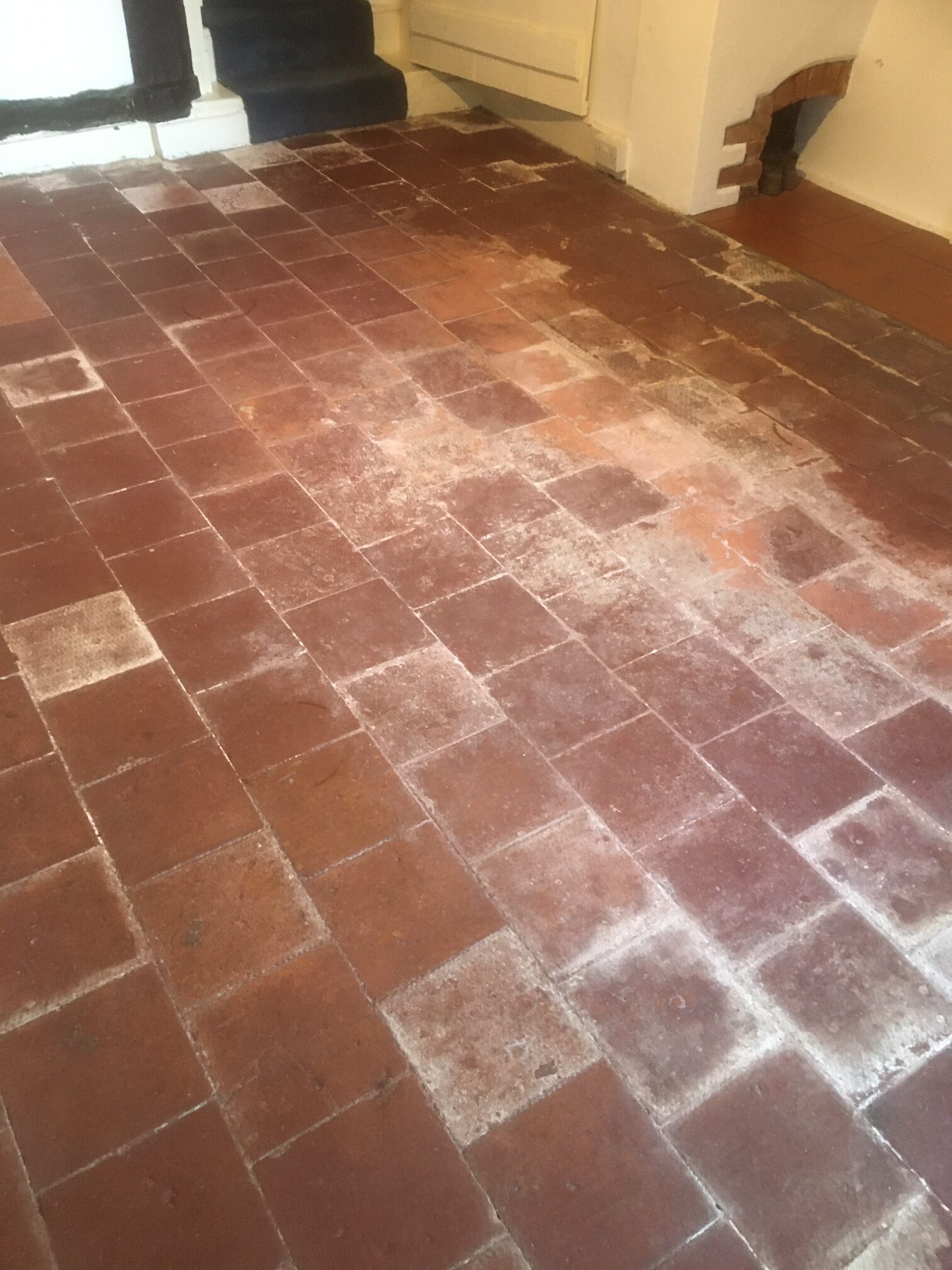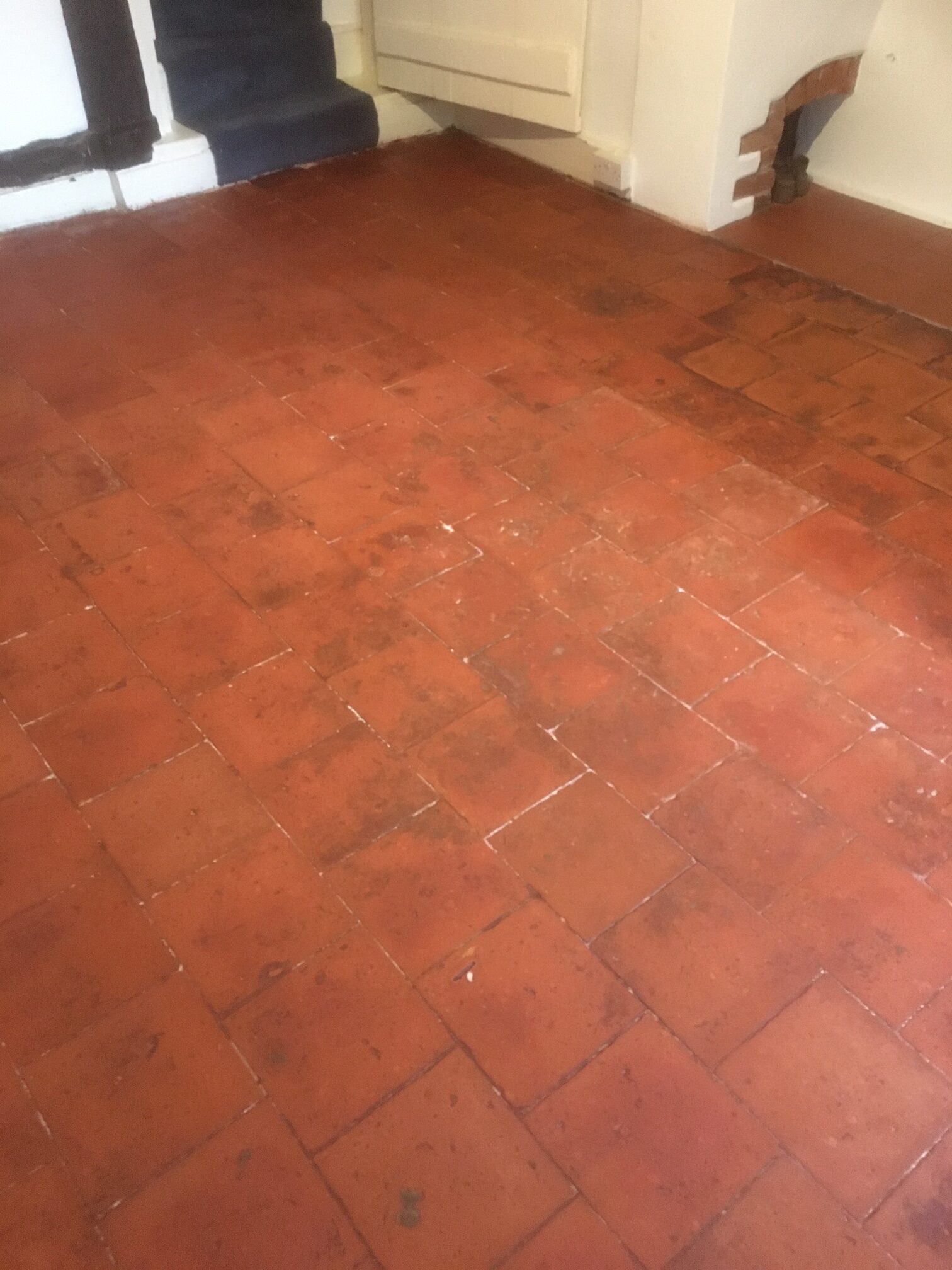
Cleaning Terracotta Tile
I started cleaning the Terracotta by doing applying strong dilution of Tile Doctor Pro-Clean which is an effective alkaline tile cleaner. For best results I spread the solution on the floor and then leave it to dwell and soak in for up to twenty minutes. This gives the product time to eat into the dirt and old coatings before being scrubbed in with a black pad fitted to a rotary floor machine. This worked very well on the floor and the cleaning solution was soon dirty with the released soil which was removed using a wet vacuum and more water to rinse it away and dry the floor as much as possible.To remove the white efflorescent staining the floor was given an acid wash using Tile Doctor Grout Clean-up which is designed for removing grout and other mineral stains from tiling. This was brushed into the tile and grout by hand and left to fizz as it reacted with the efflorescence. After another rinse and extract with the wet vacuum the floor was left to dry out for a couple of days. The next step would be to seal the Terracotta and for best results the tile needs to be dry.
Sealing Terracotta Tile
On my return I checked the tiles were dry by taking a few moisture readings with a damp meter. The readings came back fine so I need not have been concerned however Terracotta tiles being made from clay are very porous so its always a good idea to check.Given the previous issues with damp I knew I would need to use a fully breathable sealer, so I opted to use Tile Doctor Colour Grow. This product will cope well with the moisture and contains a colour enhancing formula that really brings out the red colour of the Terracotta.
